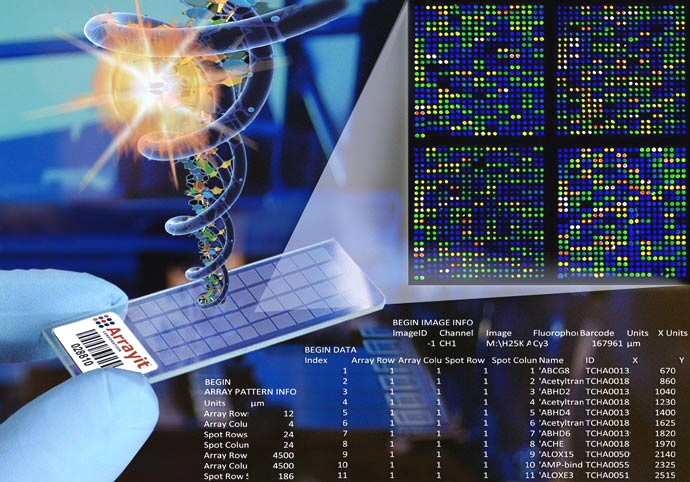Nano internal components (bio-receptors) Nano bioreceptor PhD Nano _ Microelectronics
Researcher and author: Dr. ( Afshin Rashid)
Note: Biosensors (biosensors) are a group of measurement systems and their design is based on the selective identification of analytes based on biological components and physical and chemical detectors.
A biosensor actually consists of a small sensor and biological material fixed on it. Biosensors are analytical tools that can use biological intelligence to detect and react with a compound or compounds. And thus create a chemical, optical or electrical message. Biosensor technology actually represents a combination of biochemistry, molecular biology, chemistry, physics, electronics and computers. Because biosensors are a powerful tool for identifying biological molecules and are used in various medical sciences, chemical industries, food industries, environmental monitoring, production of pharmaceuticals, health products and so on. Biosensors are widely used in medical diagnostics and laboratory sciences.
Nano internal components (bio-receptors)
1) Bioreceptor or bioreceptor
) 2 detector and
) 3 converters
A wide variety of biosensors and related methods have been introduced in nano-microelectronics. These analytical devices are composed of biological detection elements that are associated with signal detection (eg, enzymes, microorganisms, etc.). These devices respond to the presence and concentration of the analyst and produce a measurable response. Nanomaterials and new nanostructures such as nanoparticles, nanocrystals, carbon nanotubes, nanofibers and thin films have been identified as sensor devices. Nanoparticles have many applications in (sensors and biosensors and bio-receptors). Nanoparticles, glowing semiconductor nanocrystals, and quantum dots are a class of nanosensors and biosensors capable of detecting existing toxins. In the environment and it has been shown that nanocrystals and quantum dots along with antibodies can detect four types of toxins simultaneously .
These types of nanosensors are used for simultaneous detection of multiple contaminants in water or soil samples with high sensitivity detection capacity. Much research has been done on porous and porous nanostructures such as carbon nanotubes, these nanostructures in biosensors to increase quality And the activity of stationary biomolecules are used. The dimensional, surface and electronic properties of carbon nanotubes make them ideal materials for use in chemical and biochemical sensors. A new generation of nanoparticles is designed to remove polyunsaturated aromatic hydrocarbons that are difficult to remove from contaminated water or soil .
The bioreceptors used in biosensors are as follows:
1. Enzyme
2. Antibodies
3. Cellular receptors
4. Nucleic acids
5. Microorganism or whole cell
6. Texture
7. Synthetic receptors .Enzymes
The performance of the converter (bio-receptor) sensors converts a visible physical or chemical change into a measurable message, the magnitude of which is proportional to the concentration of the substance or group of substances being measured. This is achieved by combining two different processes. ; This device combines the properties and sensitivity of biological materials with the computing power of a microprocessor. Most biosensors are made of electrochemical converters.
Conclusion :
Nanomicro-nanoelectronics technology increases the sensitivity of sensors and their cheap and automatic production and can be used in the laboratory and outside to quickly detect toxic and pathogenic substances (pathogens).
Researcher and author: Dr. ( Afshin Rashid)
PhD in Nano-Microelectronics





